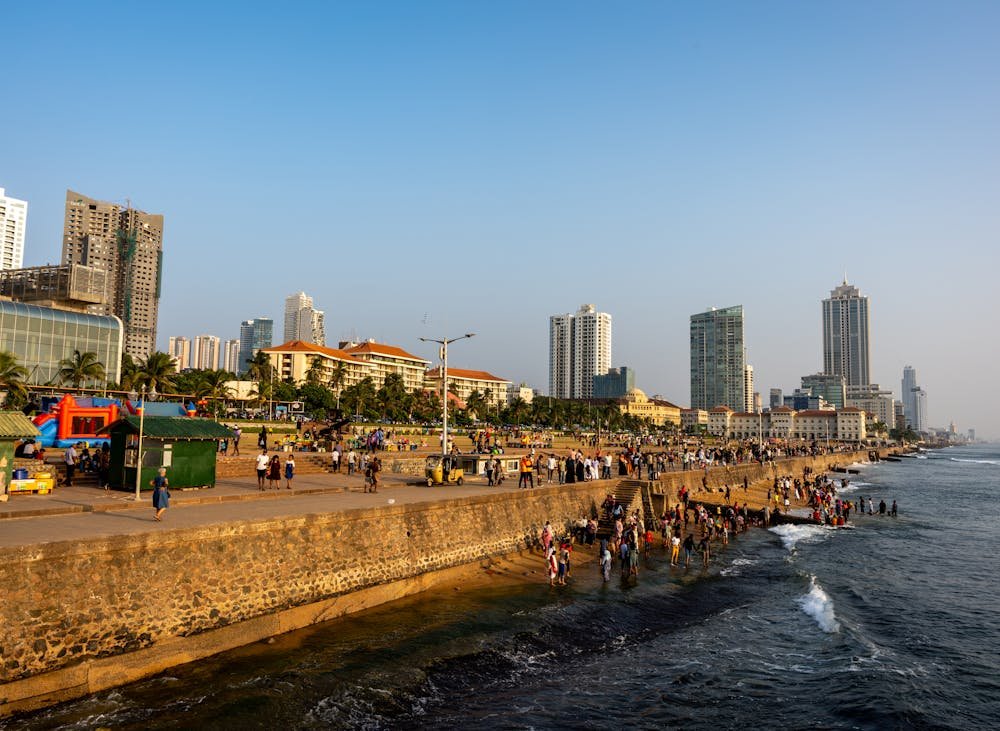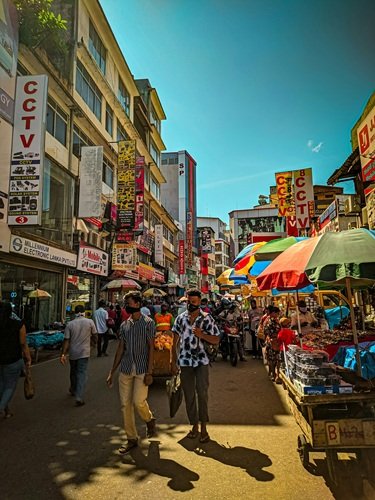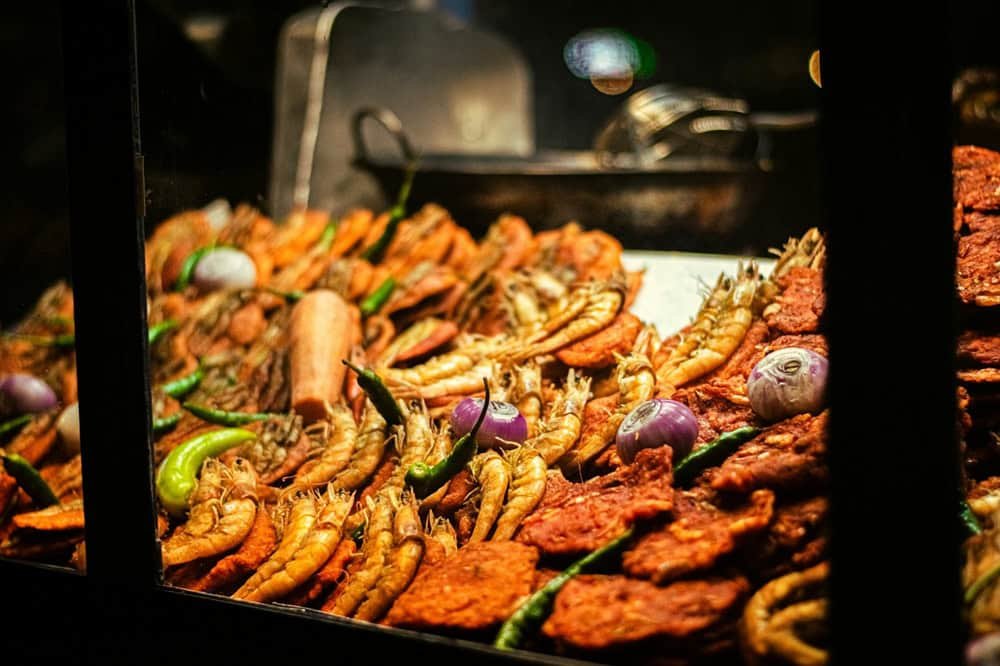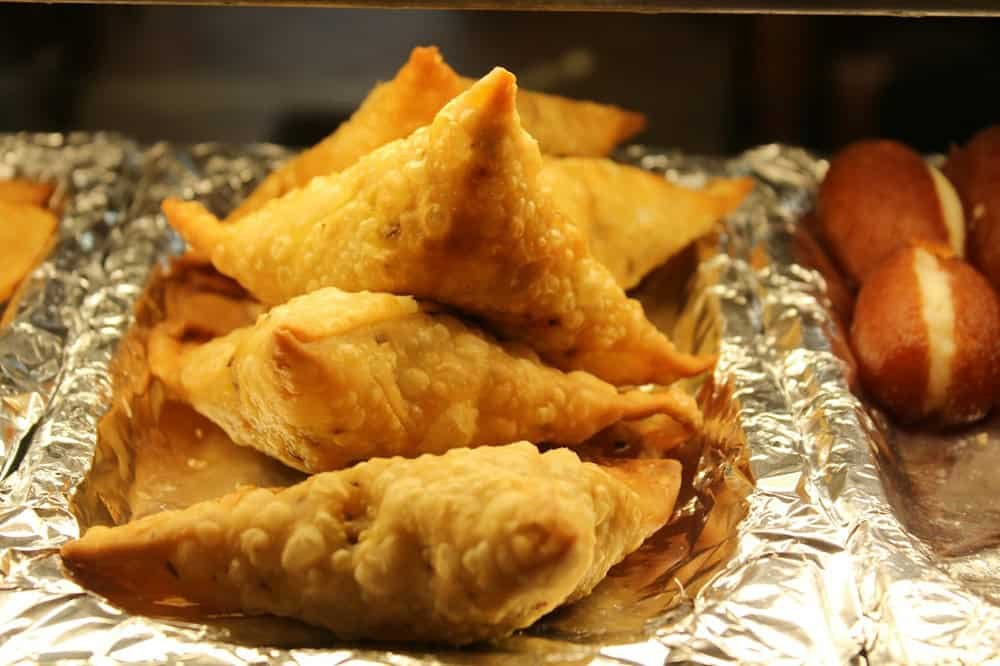Wants to know top street food places in Colombo?
The smell hits you first. Grilled meat, fried dough, spices you can’t quite name and that metallic clang of kottu being chopped on a hot griddle. You’re standing on a Colombo street corner at 7pm, and suddenly every restaurant you researched feels irrelevant.
Street food in Colombo isn’t just cheaper than sit-down meals (though yeah, you’ll eat well for under 500 rupees). It’s where the city actually lives. Office workers grabbing lunch between meetings. Families sprawled on the grass at Galle Face watching the sunset. Late-night crowds arguing over who makes the best kottu on Marine Drive.
You won’t find this food on Instagram-perfect plates. You’ll eat standing up, or sitting on a curb, or leaning against someone’s tuk-tuk.
But that’s the point.
This guide breaks down where to go, what to order, and how to navigate Colombo’s street food scene without getting lost or sick.
Let’s start with why Colombo does street food better than most cities.
Table of Contents
ToggleWhy Colombo Is a Street Food Lover’s Paradise
Most cities have street food. Colombo has street food culture. The difference shows up around noon when office workers flood out of buildings in Fort and Pettah, heading straight for their regular kottu guy or hopper stand.
Here’s what makes it work so well:
Everything gets cooked fresh while you watch. That kottu is chopped right in front of you. Isso wade is dropped into hot oil the moment you order. There’s no “holding under a heat lamp” situation happening. If a stall isn’t busy, locals don’t eat there.
The prices stay real because these vendors serve locals first. A filling plate of kottu costs 300-600 rupees depending on what protein you choose. Hoppers run 30-50 rupees each. Compare that to hotel breakfast (2,000+ rupees) and you’ll understand why backpackers and budget travelers basically live off street food.
But it’s not just about saving money (though that helps).
Street food spots become gathering places. Galle Face Green on a Sunday evening turns into this massive outdoor party where families fly kites, couples share isso wade, and kids run around while parents sip fresh king coconut water. The food is almost secondary to the scene itself… almost.
The vendors know their craft. Some of these guys have been flipping hoppers or chopping kottu for 20+ years. They’ll customize your order based on one look at your face, somehow knowing if you can handle extra chilies or if you need the tourist-level spice (which is still pretty spicy, just so you know).
You’ll eat standing shoulder-to-shoulder with everyone from tuk-tuk drivers to businessmen in ties. Street food doesn’t care about your hotel rating or your Instagram follower count. It just cares if you’re hungry. You can book a tour guide with Wander Tropics for easy navigation.
Famous Street Food Areas in Colombo
Galle Face Green

This is where everyone starts, and for good reason. Galle Face Green is a half-mile stretch of lawn running along the ocean in the heart of Colombo. By late afternoon, the food vendors roll in and set up their carts, and suddenly you’re standing in the middle of Colombo’s most famous street food scene.
Kids chase each other while parents queue up for isso wade, those prawn fritters that come out of the oil golden and crispy, served in a paper cone with a squeeze of lime.
You’ll find isso rolls here too. Basically a roti wrap stuffed with spicy shrimp filling that’ll have you sweating within three bites.
Pettah Market

If Galle Face is street food with ocean views, Pettah is street food with organized chaos.
This is Colombo’s oldest market district, and it feels like someone threw every possible thing into a few square blocks and said “figure it out.” Electronics next to vegetables next to fabric next to gold jewelry next to street food stalls squeezed into corners you didn’t know existed.
But the food here is a must-try. This is where locals eat when they’re actually hungry, not when they’re showing off for visitors.
Marine Drive
Late night hunger hits different in Colombo, and Marine Drive is where you solve it.
This strip runs along the coast south of Fort, and after 9pm it transforms into kottu central. The sound of metal spatulas chopping against hot griddles echoes down the street, mixing with conversations spilling out of bars and the occasional tuk-tuk honking past.
The kottu here isn’t necessarily better than other places (locals will argue this forever), but the vibe is unmatched. You’re eating with the ocean somewhere in the darkness beyond the road, probably sitting on a plastic chair that’s seen better days, watching the cook turn your dinner into a percussion performance.
Aluthkade
Aluthkade sits near the Colombo Fort railway station, but the food costs half what you’ll pay anywhere else, and it’s cooked by people feeding hardworking locals who’d complain immediately if the quality dropped.
You’ll find rice and curry plates here for 150-250 rupees. Hoppers in the morning. Kottu at lunch. String hoppers with sambol. The portions are generous because these customers need actual fuel, not Instagram content.
Must-Try Street Foods in Colombo
If you want to get the best experience and deals, then you’d want to navigate the city and street corners with an experienced tour guide.
That said, here are some must-try street foods in Colombo:
Kottu Roti
You’ll hear kottu before you see it. Kottu starts with godhamba roti (a flaky flatbread) that gets shredded into strips. Then the cook throws it on the griddle with onions, leeks, cabbage, carrots, green chilies, and whatever protein you ordered. Eggs get cracked right on top. Curry powder, chili powder, and usually some leftover curry sauce from earlier get mixed in. The whole thing gets chopped and tossed until it’s this glorious mess of textures and flavors.
Isso Wade (Prawn Fritter)

Isso wade is basically a lentil-based fritter with whole prawns mixed in, deep-fried until crispy on the outside and just tender enough inside. They come out of the oil hot, get a squeeze of lime, sometimes a sprinkle of chili powder if you’re brave, and land in your hand wrapped in newspaper or a paper cone.
You eat isso wade immediately. Like, standing right there at the cart. They lose their magic once they cool down and the crispy exterior goes soft. That first bite when it’s still too hot and you’re doing that thing where you breathe in sharply to cool it down, that’s the experience.
Hoppers & Egg Hoppers
You’re looking at a bowl-shaped pancake made from fermented rice flour and coconut milk, cooked in a small wok-like pan that gives it crispy lacy edges and a soft spongy center. Plain hoppers are great. Egg hoppers are better.
The egg hopper situation works like this: the batter goes into the pan, the cook swirls it to coat the sides, then cracks an egg right into the center while the edges are crisping up. The egg cooks with the hopper, yolk still runny (if they do it right), creating this perfect combination where you tear off the crispy edges and dip them into that soft yolk center. Locals eat hoppers for breakfast or dinner, rarely lunch.
If you hit a spot where the hoppers seem off, just move on to another vendor.
Samosas & Rolls

These are your grab-and-go energy hits between actual meals. Samosas in Colombo follow the standard triangle format of pastry shell stuffed with spiced potatoes, peas, sometimes minced meat, deep-fried until golden.
Street vendors sell these from glass cases on carts. You point at what you want, they wrap it in paper, you hand over 50-150 rupees depending on what you chose.
Fresh Fruit Juices
Fresh fruit juice carts pop up everywhere. They’ve got whole pineapples, papayas, watermelons, mangoes, passion fruit, and wood apple (which looks weird but tastes incredible if you’re into sour-sweet flavors that you can’t quite describe).
The vendor chops the fruit right there, throws it in a blender with ice and sometimes a little sugar, and hands you a plastic cup or bag of juice within two minutes. No preservatives, no concentrate, just fruit and ice doing their thing.
The juice carts become essential by your second day when you realize how hot Colombo gets between meals and you need something cold that isn’t soda.
Best Time to Explore Colombo’s Street Food
Colombo’s street food scene runs on a clock that doesn’t care about your hotel breakfast buffet. Different foods show up at different times, and if you want the full experience, you’ll need to adjust your eating schedule to match how locals actually move through the day.
Morning (6am-10am)
This is hopper time. Street vendors set up by 6am, sometimes earlier, because hoppers are breakfast food. You’ll find hopper stalls near bus stations, markets, and residential neighborhoods where people grab a quick meal before work. The batter’s fresh, the pans are hot, and you’re eating alongside commuters who’ve been doing this routine for years.
If you’re near Pettah or Manning Market early, you’ll catch vendors selling wade (lentil fritters) and ulundu wade (black lentil donuts) to the morning crowd. These spots close by 10am once they sell out, so sleeping in means you miss them entirely.
Lunch Rush (12pm-2pm)
This is when Colombo’s working population floods the streets looking for fast, cheap meals. Kottu stalls fire up their griddles. Rice and curry spots in places like Aluthkade and Pettah serve lunch packets to manual laborers and office workers on tight schedules. The turnover is insane as food gets cooked, served, and eaten within minutes because everyone’s got somewhere to be.
If you want to see street food at its most functional (less romance, more fuel), hit these spots during lunch. The crowds tell you what’s good. Empty stalls during peak lunch hour means locals are avoiding it for a reason.
Late Afternoon (4pm-7pm)
This is the golden hour for street food tourism. The sun starts dropping toward the ocean, the breeze picks up, and families arrive with kids and kites. Food vendors roll their carts into position, and suddenly you’ve got isso wade frying, corn grilling, and chickpea vendors calling out prices.
If you’re only hitting one street food spot in Colombo, make it Galle Face between 5-7pm. You’ll get the food, the scene, and the sunset all at once.
Night (8pm-2am)
Marine Drive, parts of Bambalapitiya, and scattered neighborhoods around Colombo become kottu territory once the sun goes down. The sound of chopping fills the streets. Late-shift workers, post-bar crowds, and travelers with jet lag converge on these spots because everything else is closed and kottu hits different at midnight.
Daytime street food feels family-friendly and practical. Nighttime street food feels almost conspiratorial, like you’re in on a secret that only locals and insomniacs know about.
Bottom line: timing matters more than you’d think. Show up at the wrong hour and you’ll miss entire categories of food. Book your tour with Wander Tropics. This enables you plan your days around the street food schedule instead of trying to fit street food into your sightseeing schedule.
Frequently Asked Questions
Yes, if you choose busy stalls where food’s cooked fresh. High turnover means ingredients don’t sit around. Avoid tap water and ice from questionable sources and you should be fine, unless you are a picky eater.
Kottu roti takes the crown. That rhythmic chopping sound is Colombo’s unofficial soundtrack. Isso wade at Galle Face Green comes in second, especially for tourists looking for that classic beachfront snack experience with ocean views.
Incredibly cheap. Hoppers cost 30-100 rupees each. Kottu runs 400-700 rupees for a full plate. Samosas go for 40-100 rupees. Fresh juices cost 100-200 rupees. You can eat well for under 500 rupees total per meal.
Marine Drive is kottu central after 9pm, staying open until 2-3am. Areas near universities and nightlife spots keep cooking late. Galle Face Green winds down by 9pm, so head to Marine Drive or Bambalapitiya for late-night options.

